
views
Taking Small Measures to Curtail an Episode
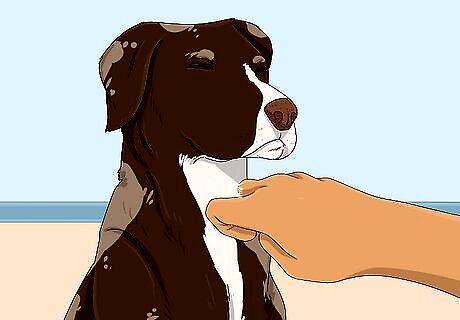
Massage the dog’s throat gently. Since most cases of reverse sneezing are caused by irritation in the breathing passages, a gentle throat massage may relieve some of the irritation and bring the episode to a quicker conclusion. Simply rub the backs of your fingers up and down the dog’s throat. Communicate calmly and lovingly at the same time: “You’re okay, Celia, Mommy loves you.”
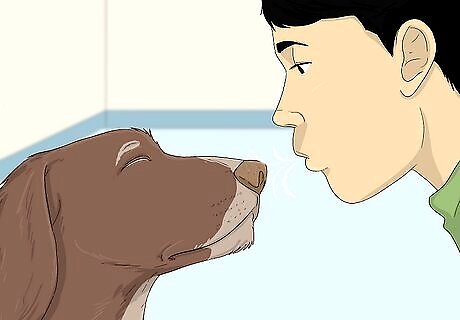
Blow small puffs of air into the dog’s face. Gently blowing air into the dog’s face can sometimes disrupt the cycle of repetitive inhalations that happens during reverse sneezing. Get within around 6 in (15 cm) of the dog’s face and aim a few puffs of air at its nose. Don’t respond in a panic and blow like you’re trying to snuff out all the candles on an 80th birthday cake! Be calm and gentle.
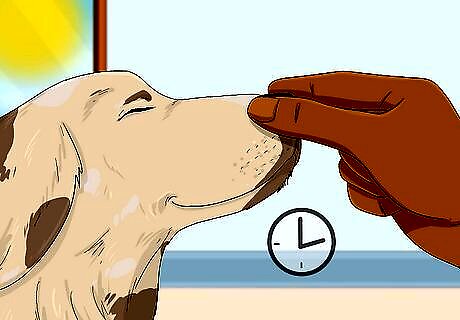
Pinch the dog’s nose shut for 1 second. This simple maneuver will cause the dog to involuntarily swallow, which in turn may end the episode either by disrupting it or by temporarily soothing any throat irritation. All that's needed is a quick, gentle pinch with your thumb and forefinger over the dog's nostrils. Don’t squeeze hard, or you may damage the dog’s nose. And don’t hold the pinch for more than a second, or you may cause the dog to panic and possibly lash out.
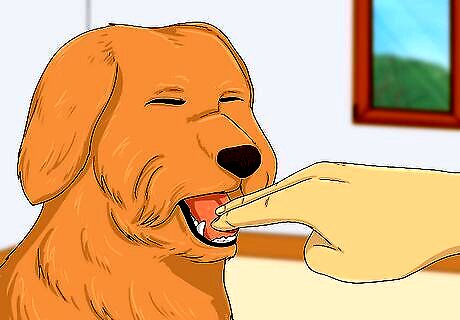
Press the dog’s tongue down in its mouth with your fingers. Do this maneuver only if you are absolutely sure that the dog will not bite you. The dog’s mouth should be at least partially open during reverse sneezing, so you can stick your first 2 fingers onto the front half of its tongue and gently press it down to the bottom of its mouth. This can help open the breathing passage and end the episode. If you choose to try this maneuver, do so calmly, and make sure the dog remains calm. If either of you seems agitated, don’t risk getting your fingers bitten.
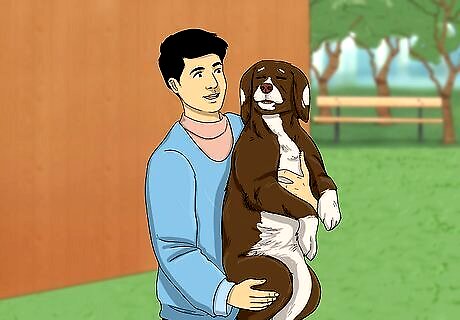
Carry the dog to fresh air while remaining calm. Some dogs are more likely to experience reverse sneezing when there are irritants in the air. So, for instance, if you are in a smoky or dusty house when an episode begins, moving the dog outdoors may stop the reverse sneezing. Dogs usually won’t move voluntarily during a reverse sneezing episode, so you’ll likely have to pick the dog up and carry it to fresh air. If so, pick the dog up carefully and calmly. Speak soothingly to the dog as you do so.
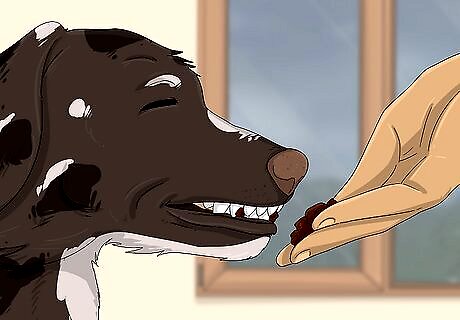
Offer your dog a treat. The act of swallowing a little food can help your dog realign the back of its throat and put an end to the reverse sneezing episode. If your dog starts reverse sneezing, encourage it to nibble a treat or a little food. If your dog is too distressed or distracted to eat the treat, blowing gently in its face or covering its nostrils for 1 second can also trigger the swallowing reflex.
Staying Calm While the Episode Passes

Identify the event as a reverse sneezing episode. During a reverse sneezing episode, a dog will usually stand still and straight, open its eyes wide, and start drawing in air very rapidly through its nose. These quick inhalations cause what most people describe as a snorting sound, which can be rather loud. For those unfamiliar with reverse sneezing, it’s easy to confuse it with choking or an inability to breathe. Watch for the typical body language, rapid inhalations, and snorting sound to identify it as reverse sneezing. Search online for “reverse sneezing in dogs” to find videos of episodes in progress so you know what to watch for. If the dog’s lips start turning blue or it shows other signs of choking, though, take immediate action.
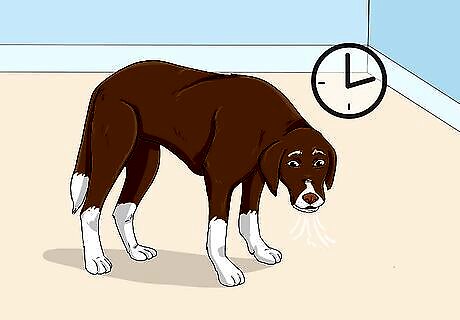
Wait patiently for the episode to end. Most episodes of reverse sneezing last for around 5 to 20 seconds, though they can last for up to a minute or, in rare instances, even 2 minutes. While you may be eager to spring into action, it’s usually best to let the episode run its course. Treat it like a case of the hiccups, or even just a bout of “normal” sneezing—it will stop on its own in time. Use past experience as your guide if your dog has had reverse sneezing before. If the episodes usually last 10-20 seconds, you might only try to stop an episode that lasts more than 30 seconds, for instance. But even then, it’s okay to just let the reverse sneezing play out.
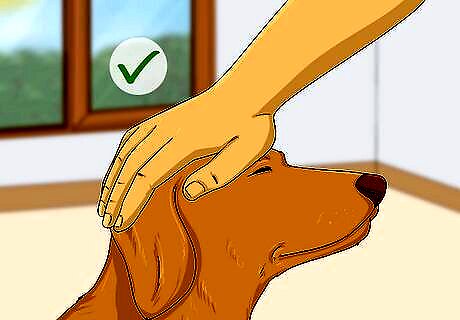
Offer soothing words of encouragement to the dog. If the dog remains calm, the episode is likely to pass more quickly. Maintain a calm environment by speaking soothingly to the dog. Say something like “It’s okay, Rusty, it will be over with soon. Good boy.” Dogs are great at reading human emotions, which is part of why they make such great companions. This means, though, that they are likely to pick up on any panic you experience during their reverse sneezing. Sensing your panic may cause them to panic, which in turn can cause the episode to last longer.
Seeking Help for Persistent Reverse Sneezing
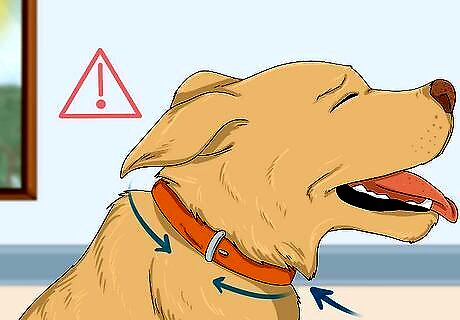
Take note of when episodes tend to occur. Nearly every dog, and especially smaller breeds of dog, will have occasional episodes of reverse sneezing. If they occur frequently, you’ll often be able to recognize familiar triggers. Take note, for instance, if reverse sneezing tends to happen when: The dog is overly excited The dog has just exercised vigorously The air is full of irritants (pollen, dust, smoke, etc.) The air is cold (especially if the dog has gone from warm indoor air to cold outdoor air) The dog wears a snug collar You pull on its leash
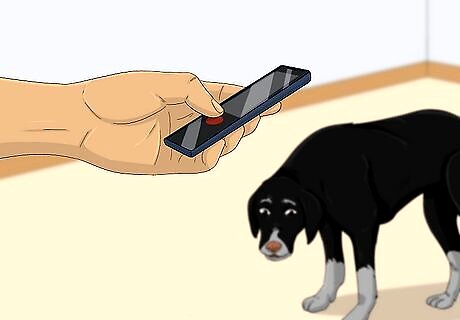
Record an episode to show your vet. If you have your smartphone handy when an episode of reverse sneezing begins, take a quick video of it for reference. If you decide to call your veterinarian--because, for instance, the episodes are happening every day or last more than a minute--you can bring the video along to show them. The video will make it easier for the vet to diagnose reverse sneezing and evaluate the likely causes and potential solutions. There’s no agreed-upon answer as to the number, duration, or frequency of episodes that should trigger a call to the vet. However, if episodes occur nearly every day, and/or regularly last for a minute or more, you might decide to call.
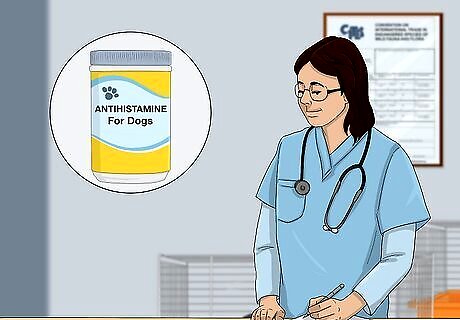
Ask your vet if medications may be beneficial. In most cases, the vet will simply state that the reverse sneezes are a natural phenomenon and should be left alone. If there seem to be particular irritants causing the episodes, however, they may recommend medications. For instance, they might prescribe an antihistamine to deal with allergens, an anti-inflammatory to deal with inflammation, or a decongestant to clear the breathing passages. They might also recommend that you switch to a different collar and/or leash, if these seem to be triggering episodes.
















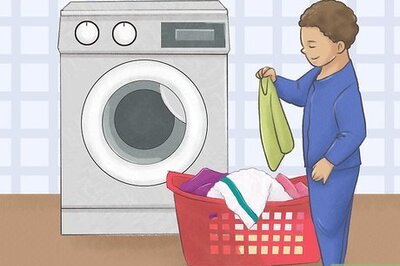


Comments
0 comment